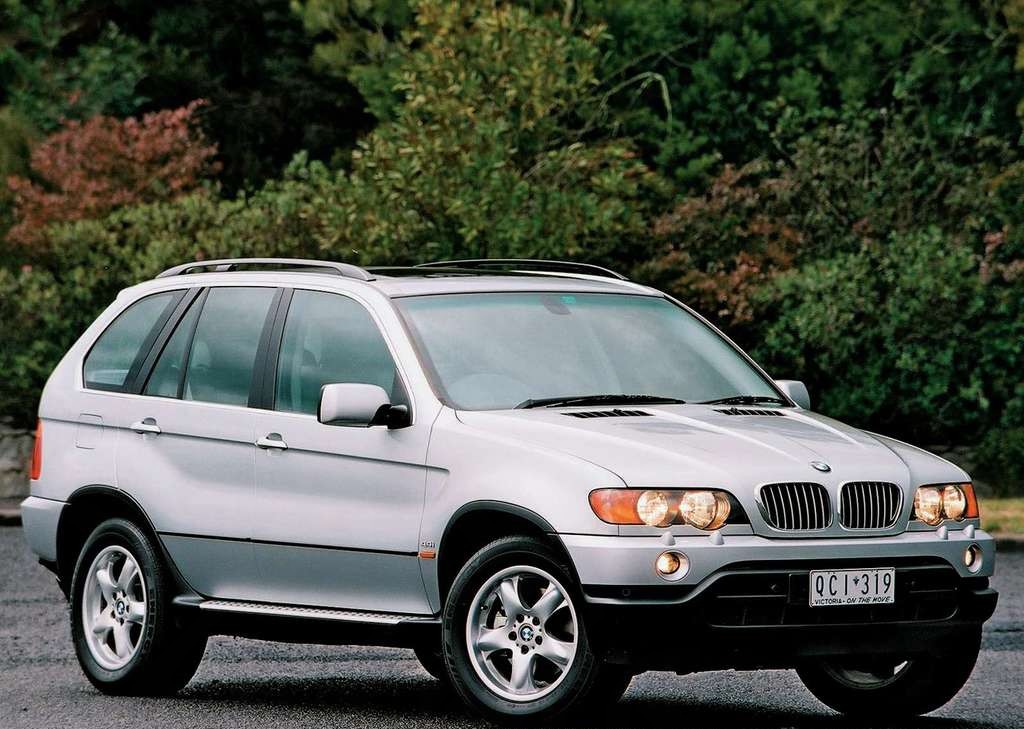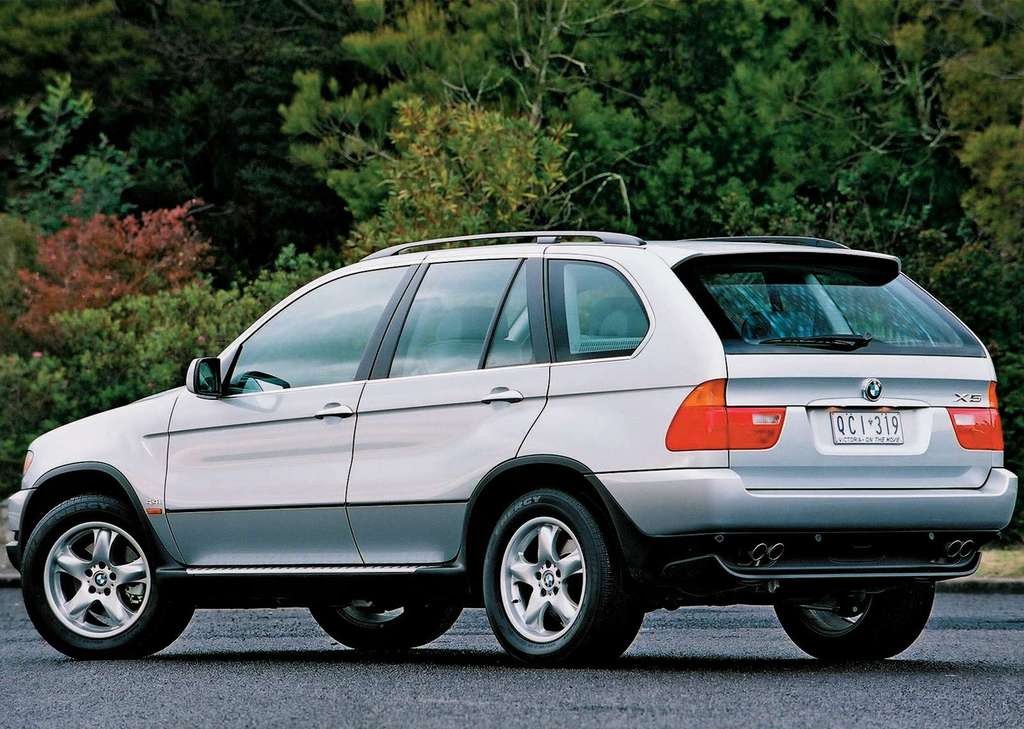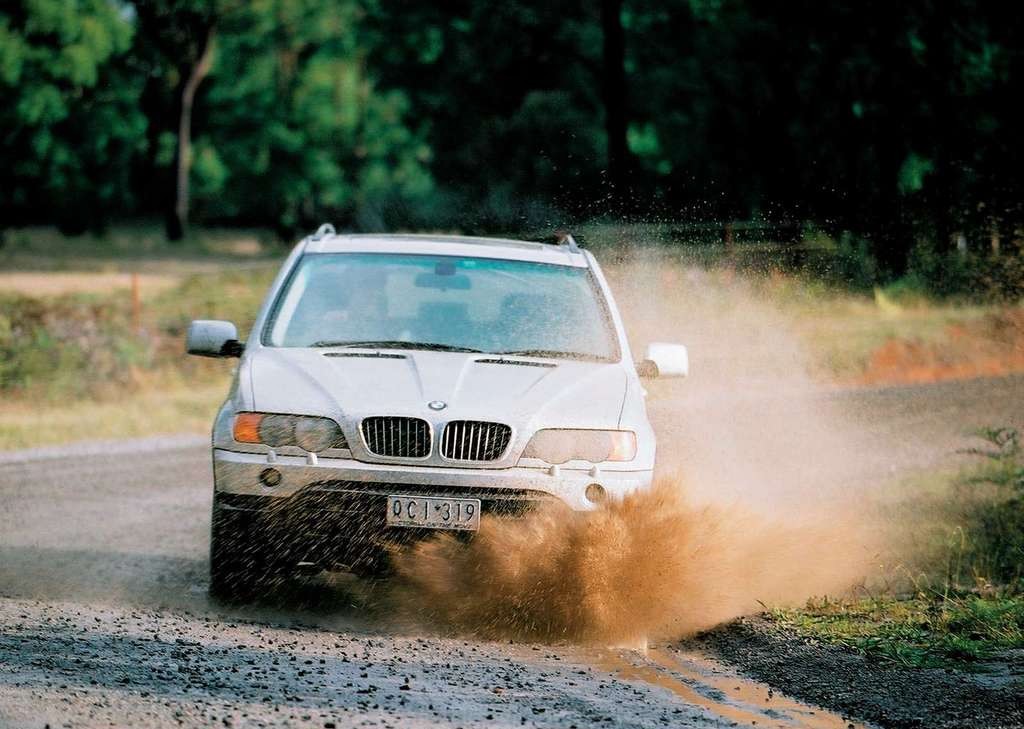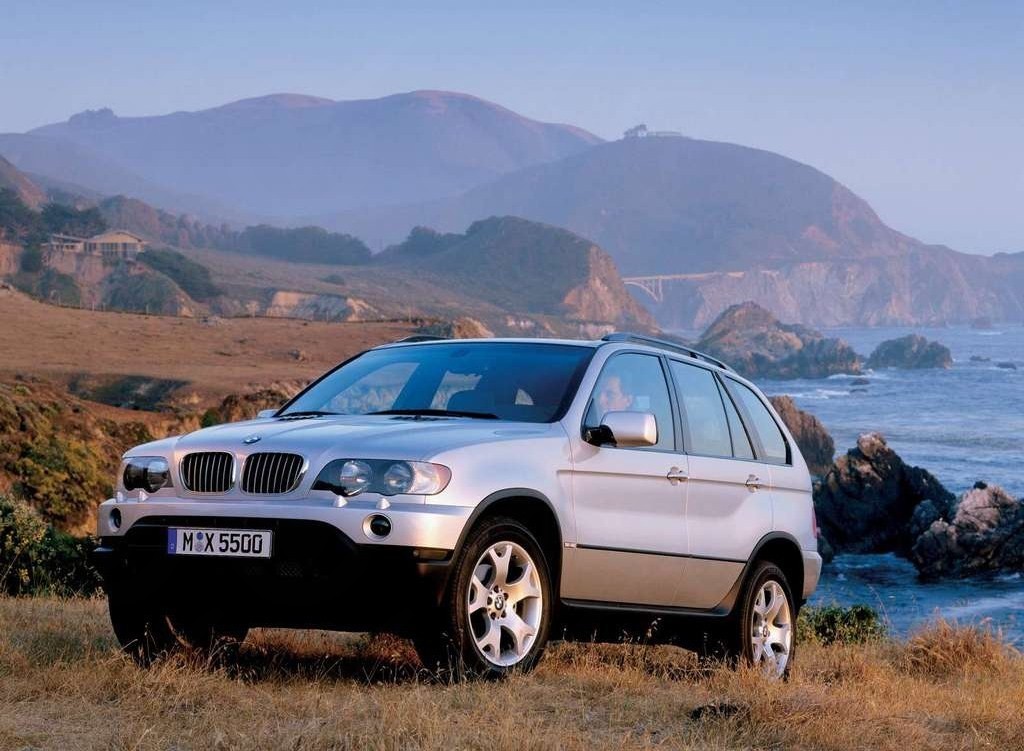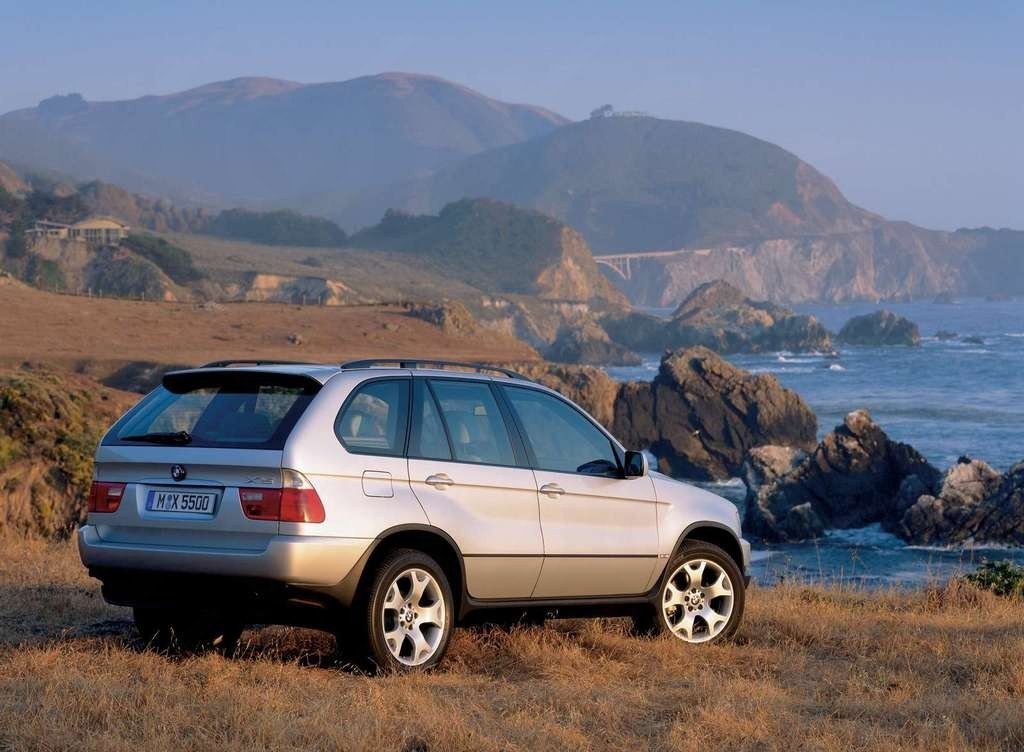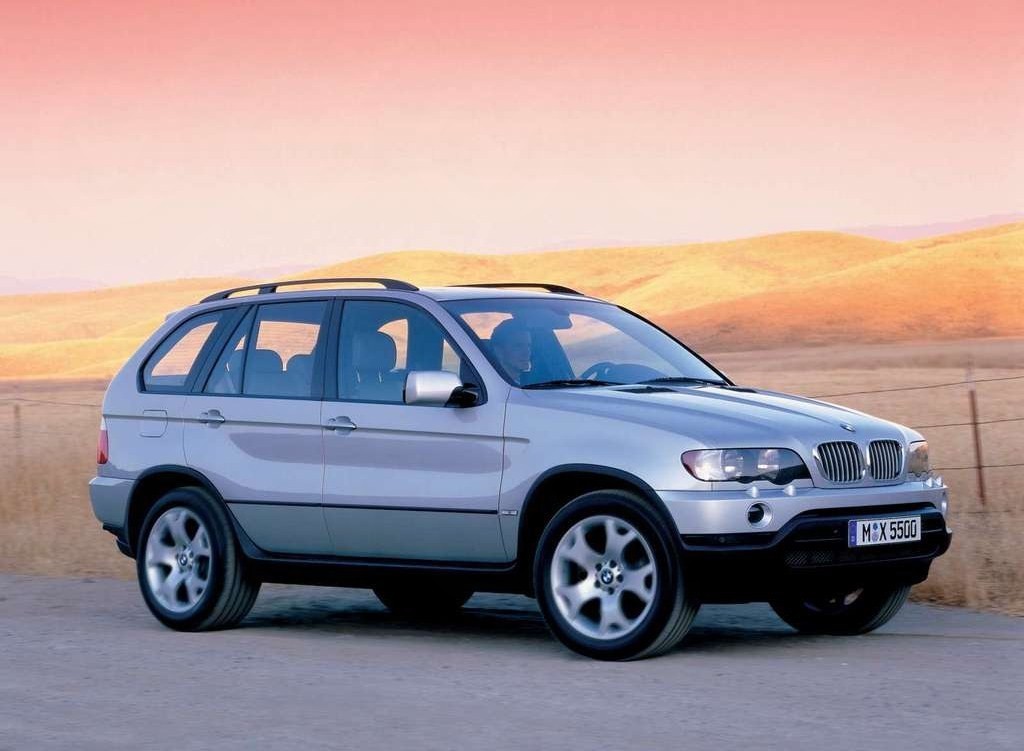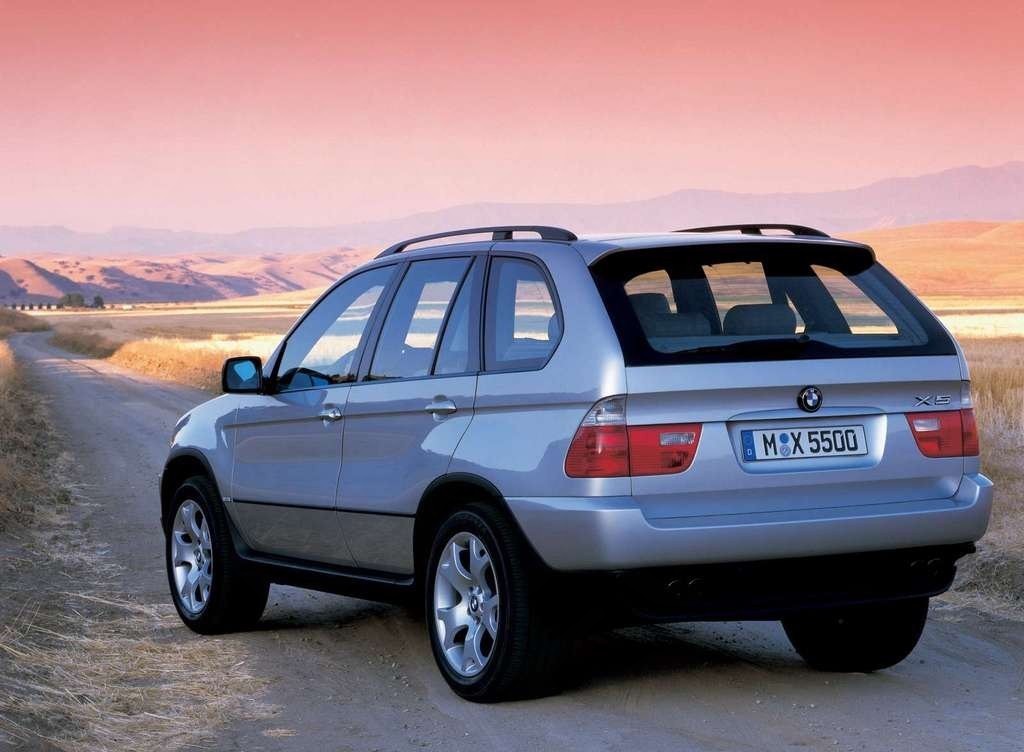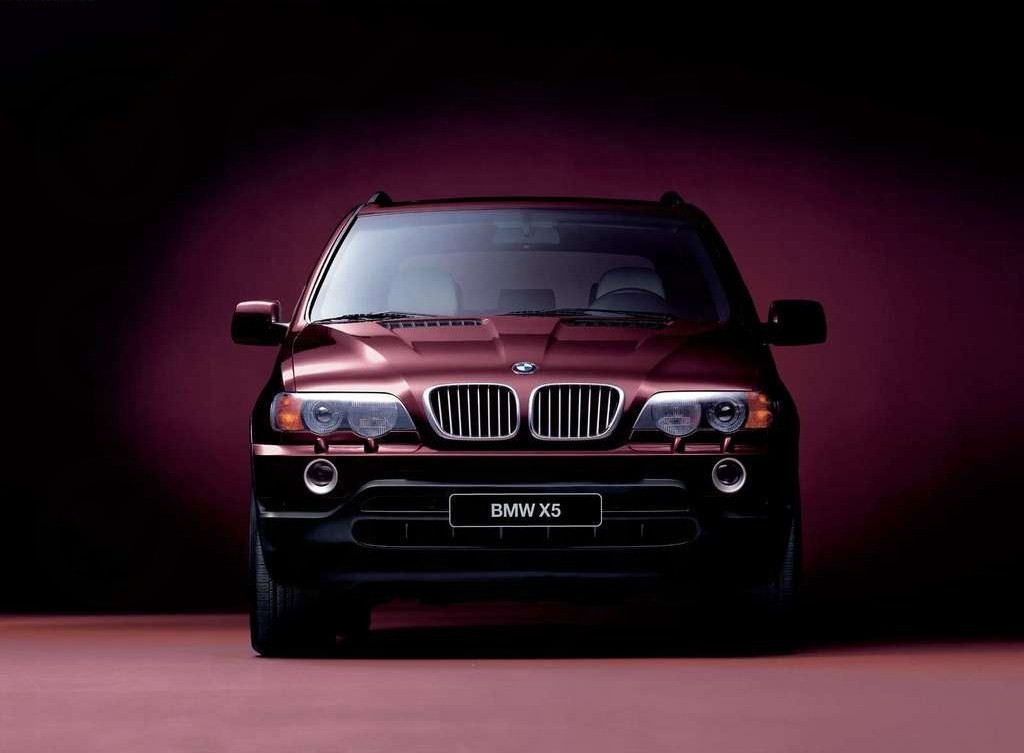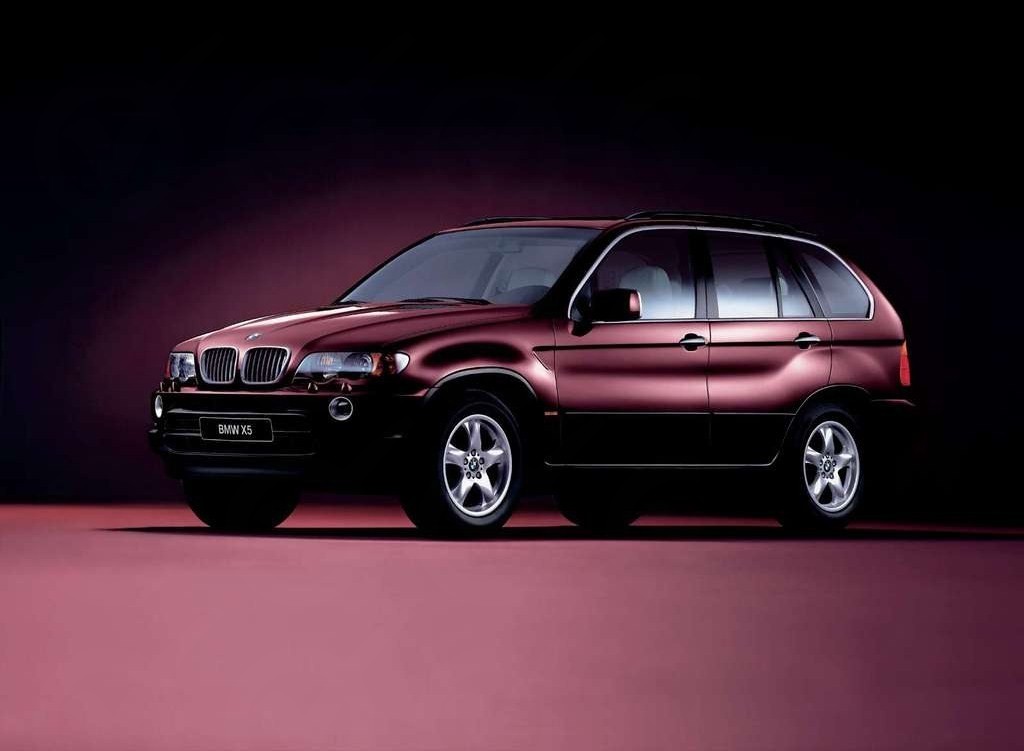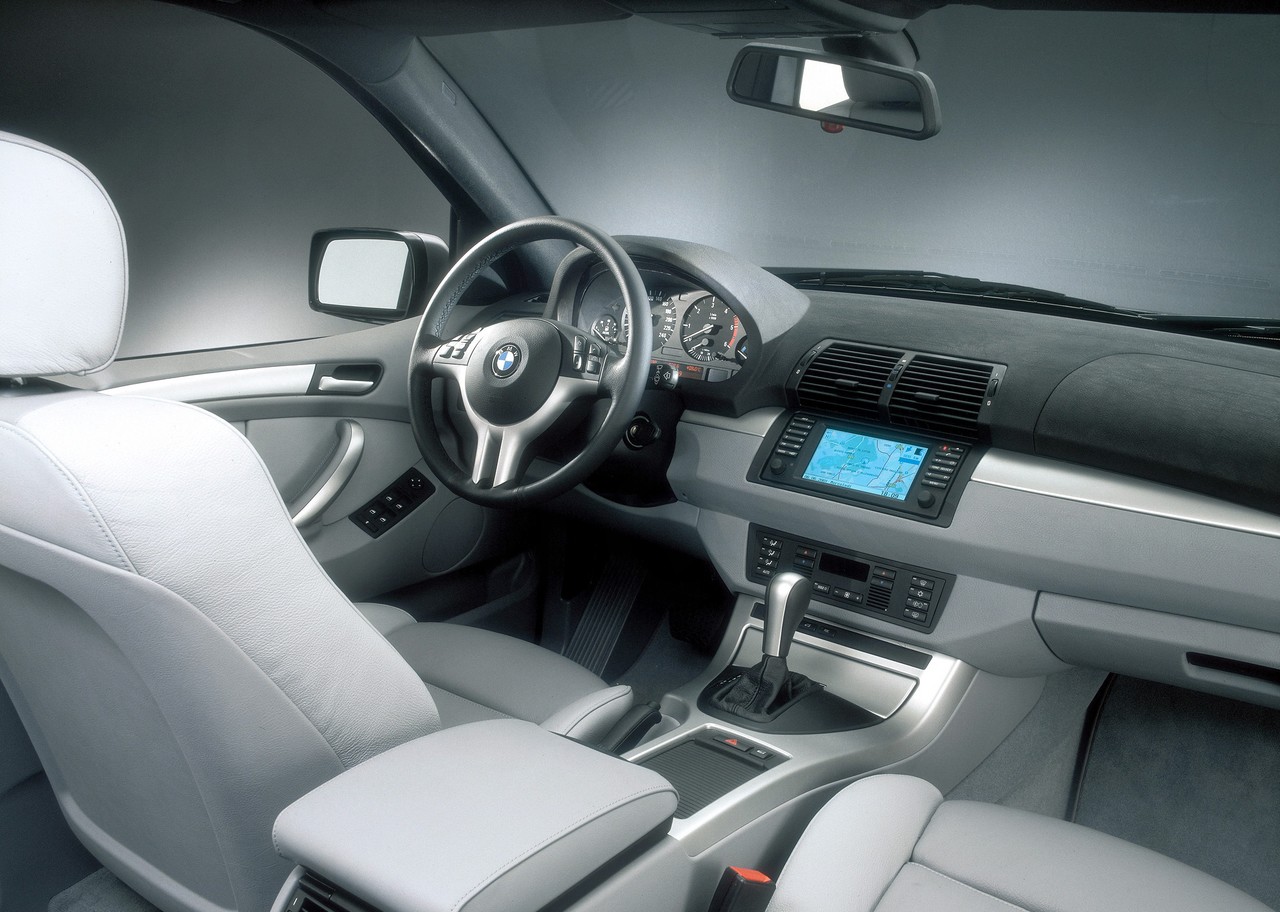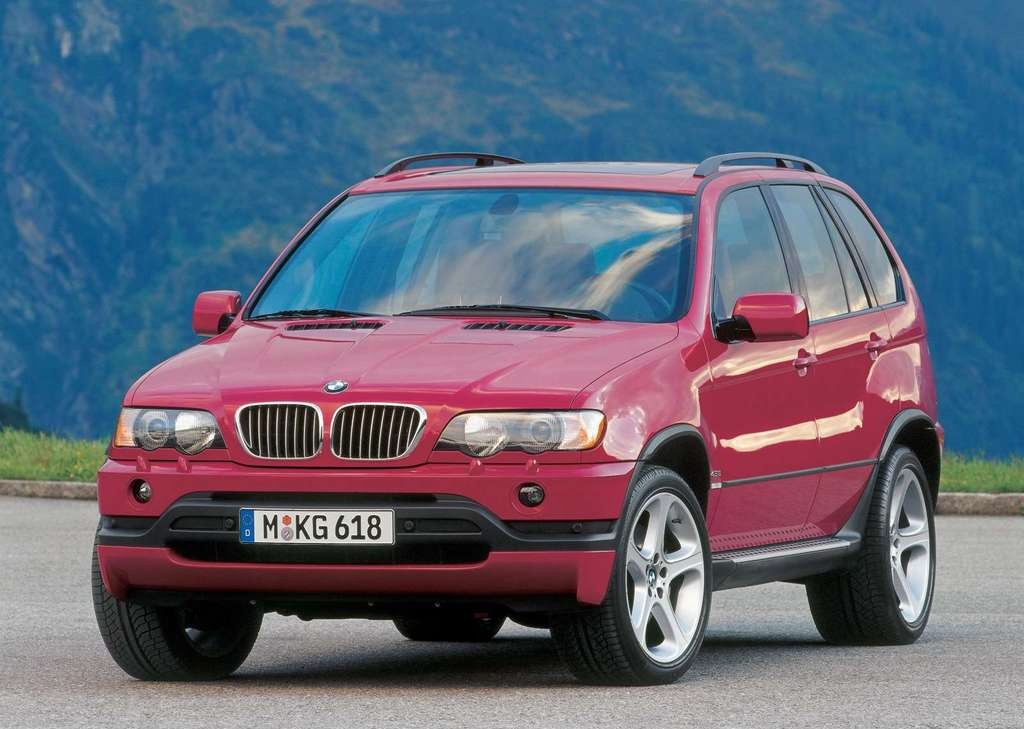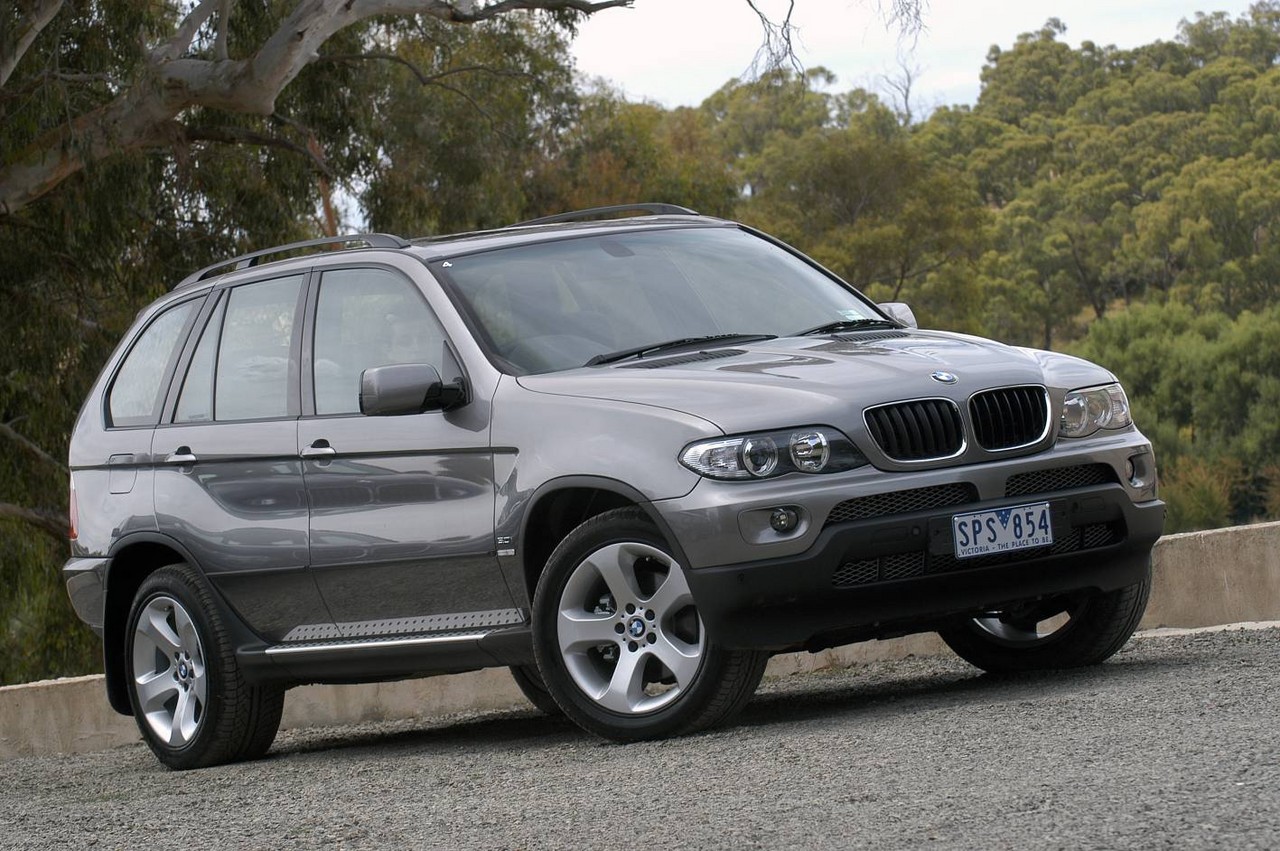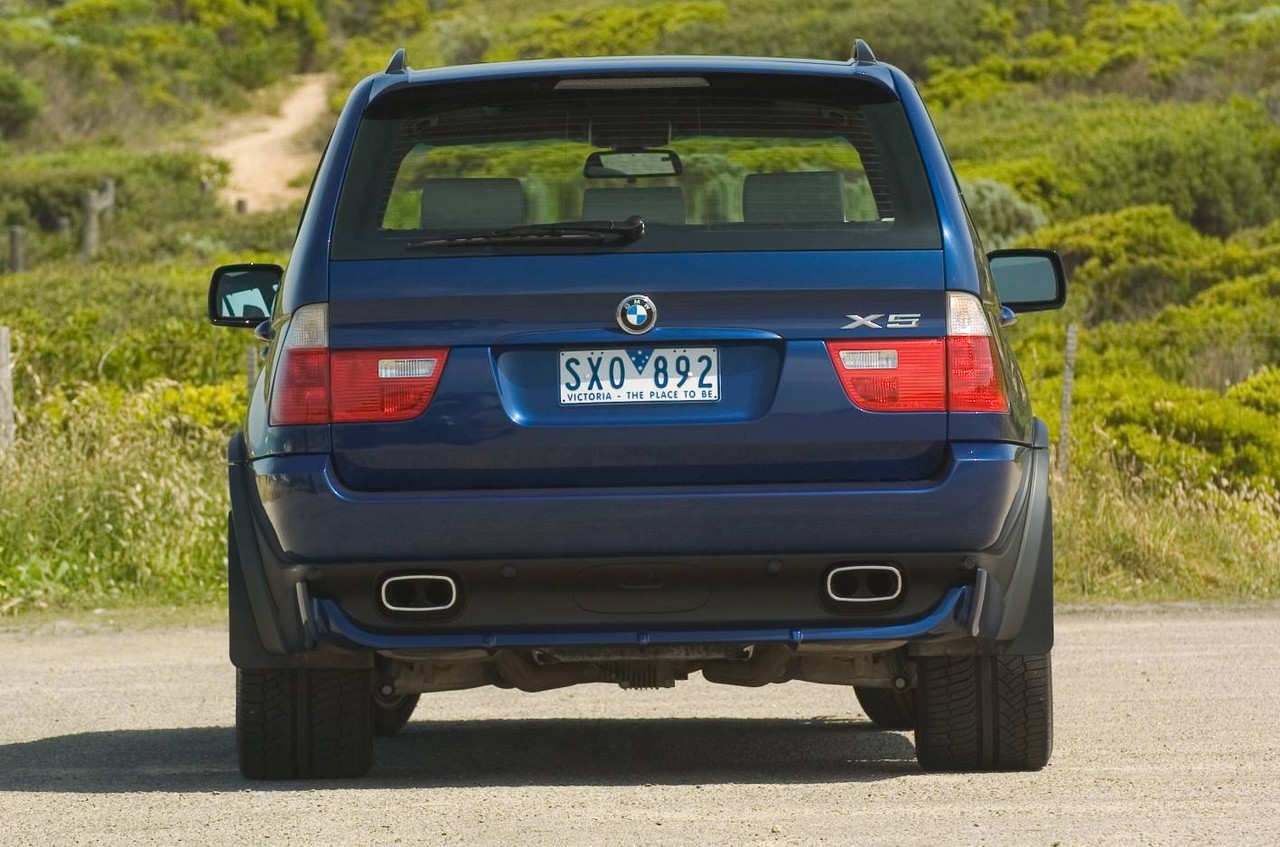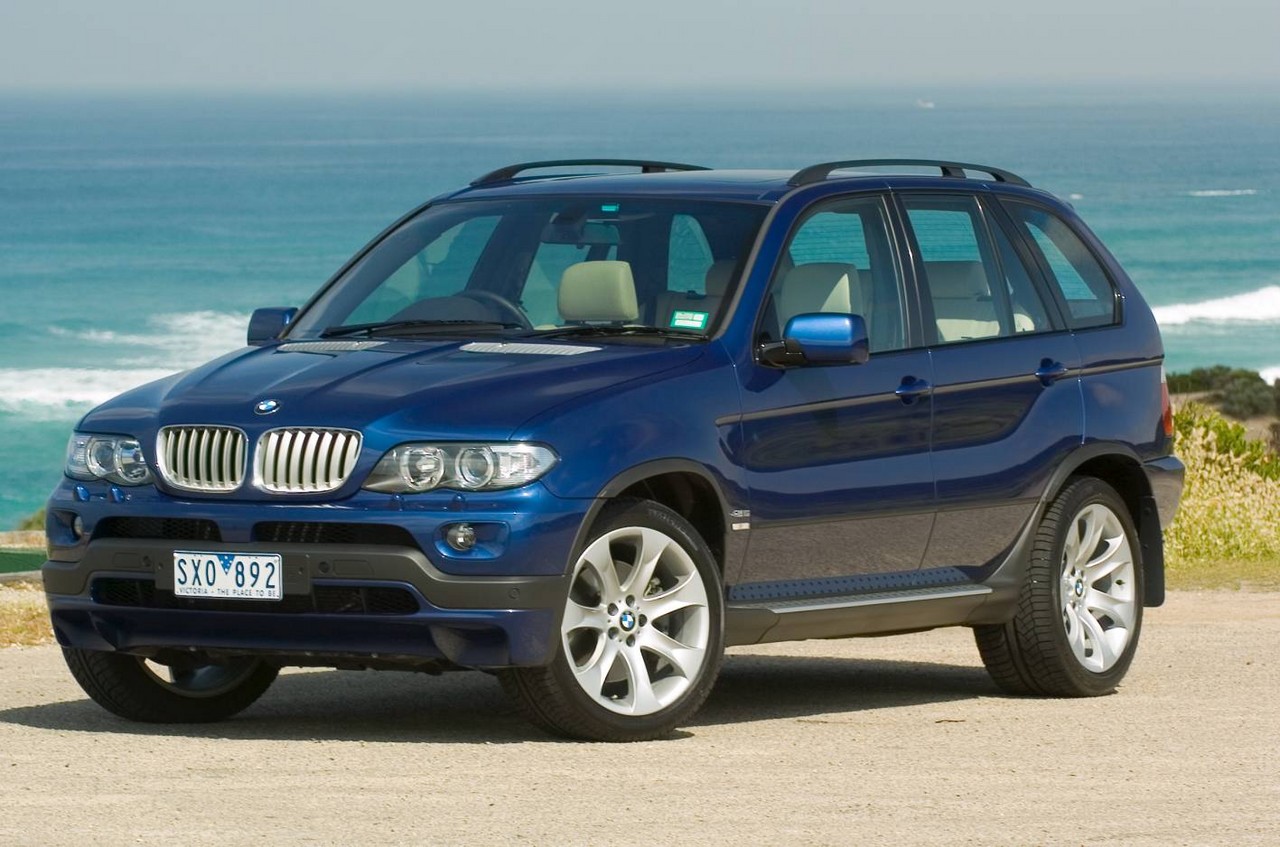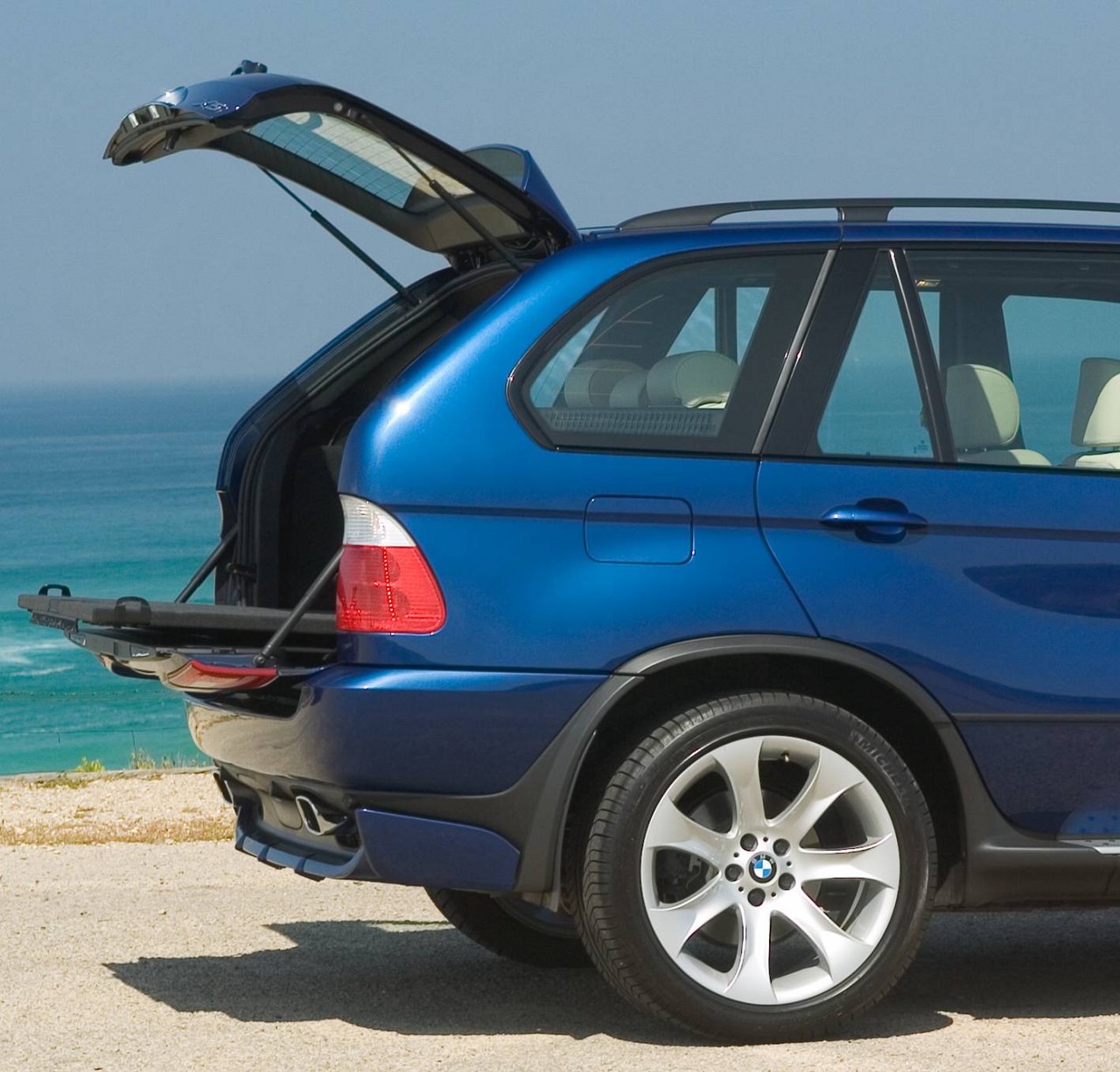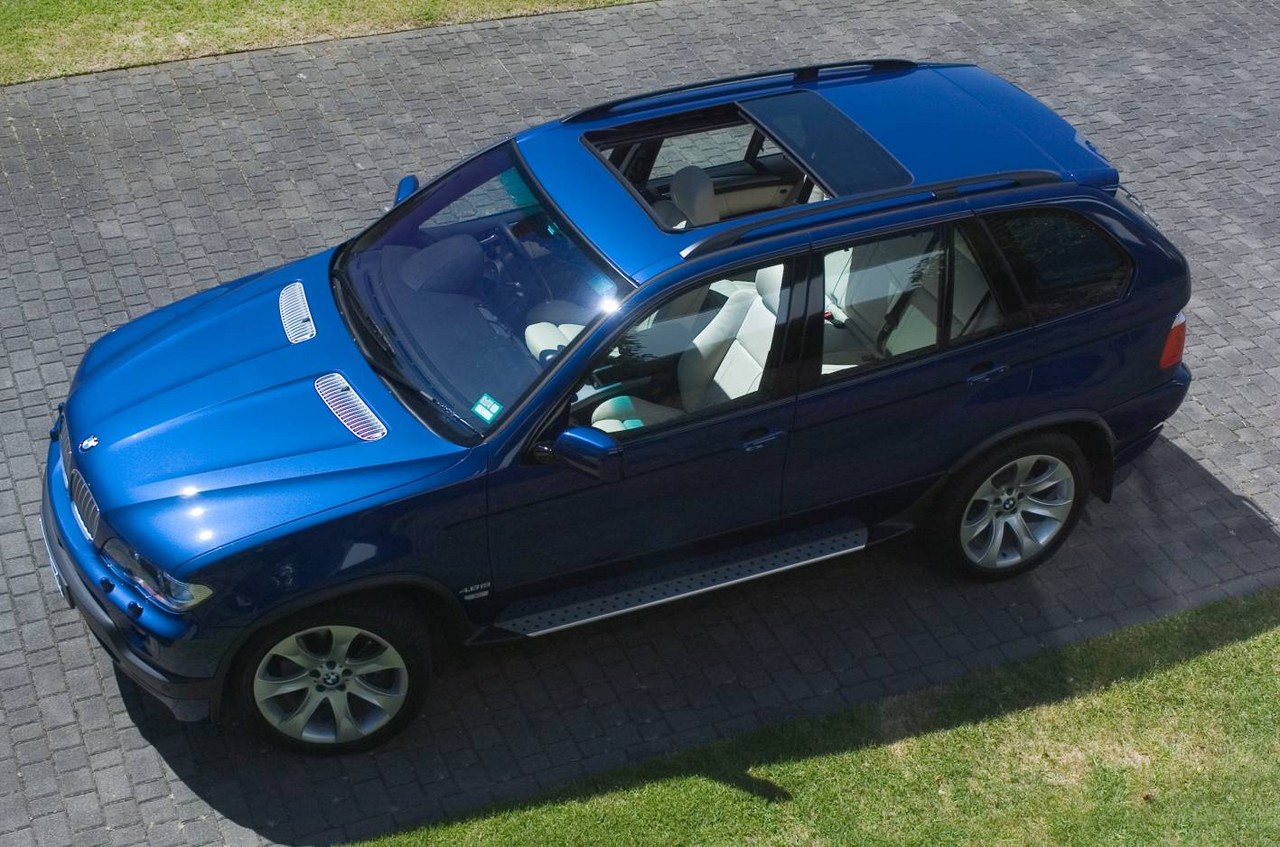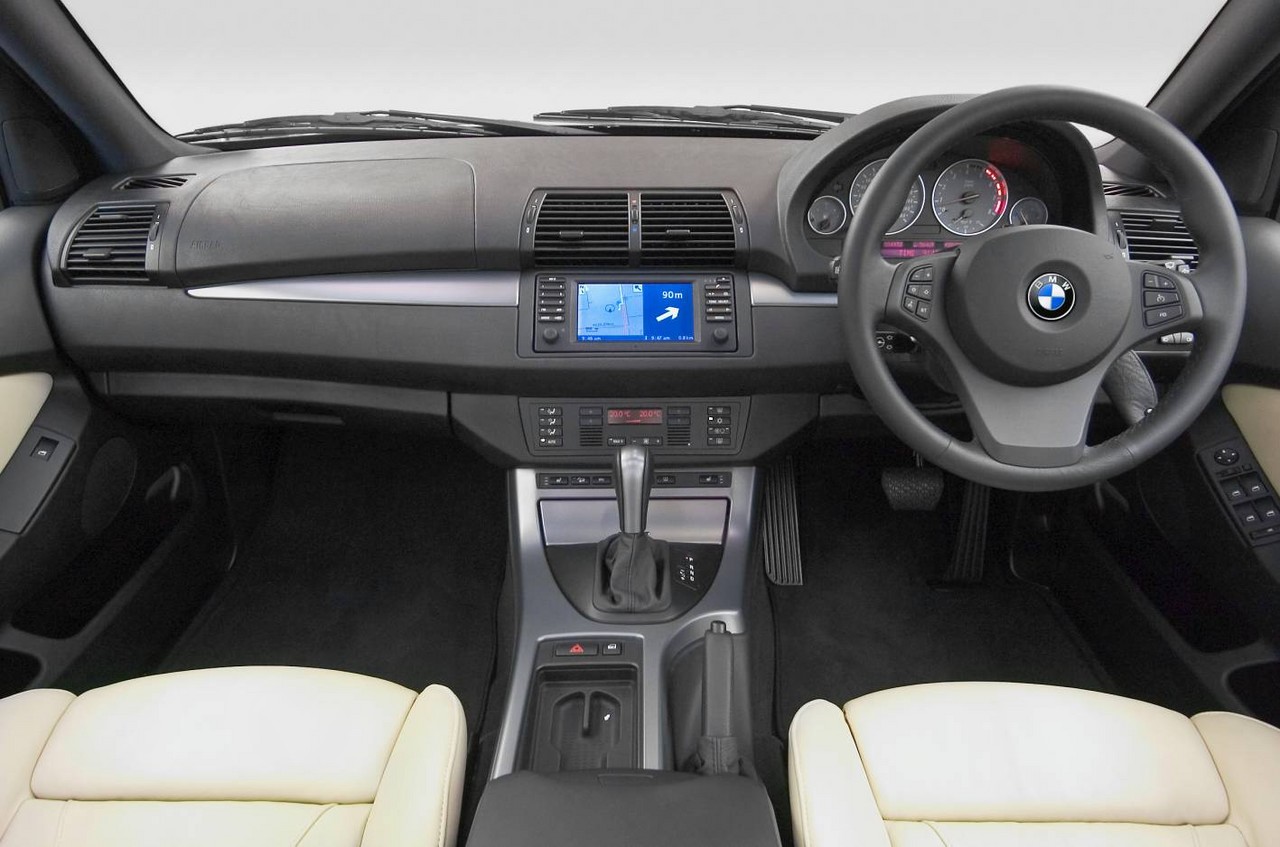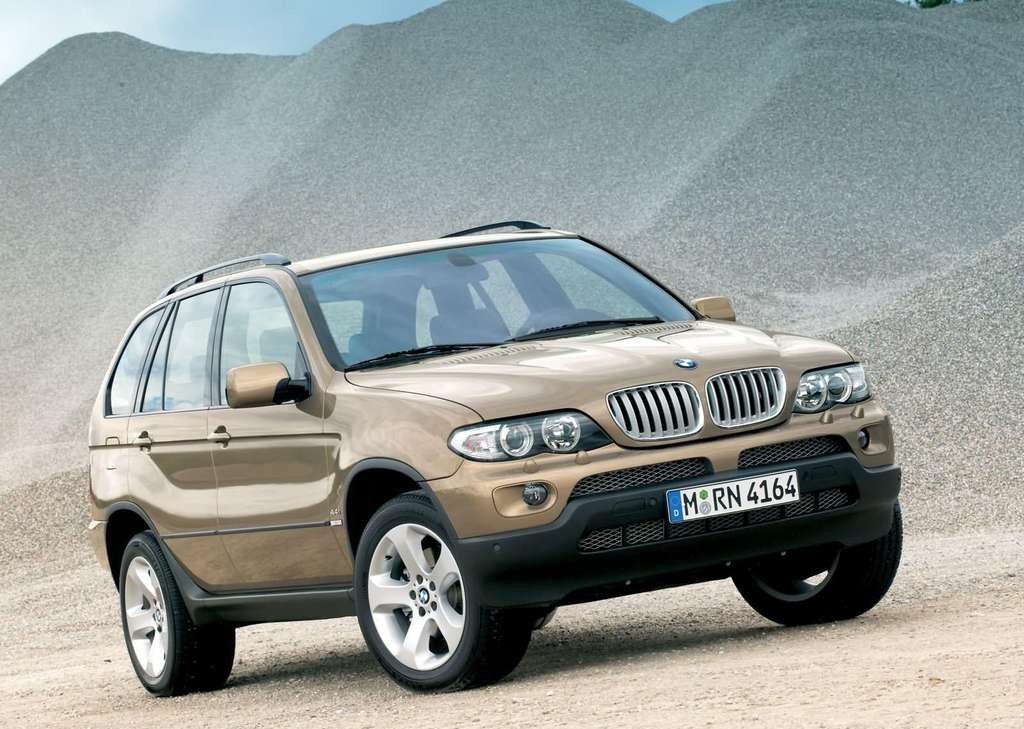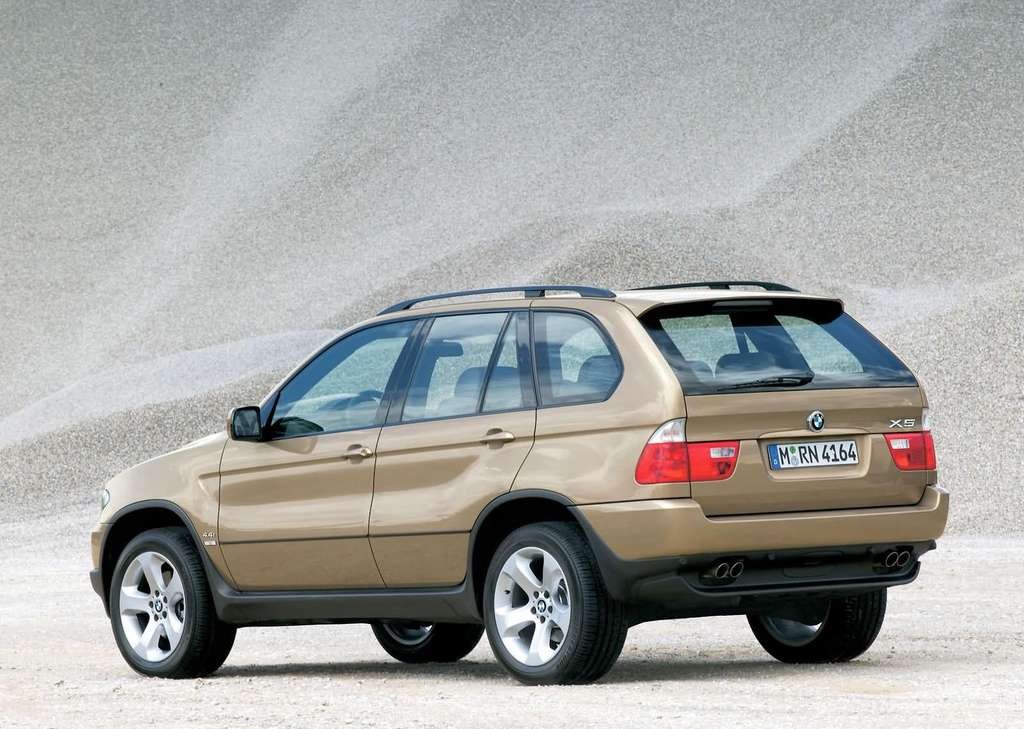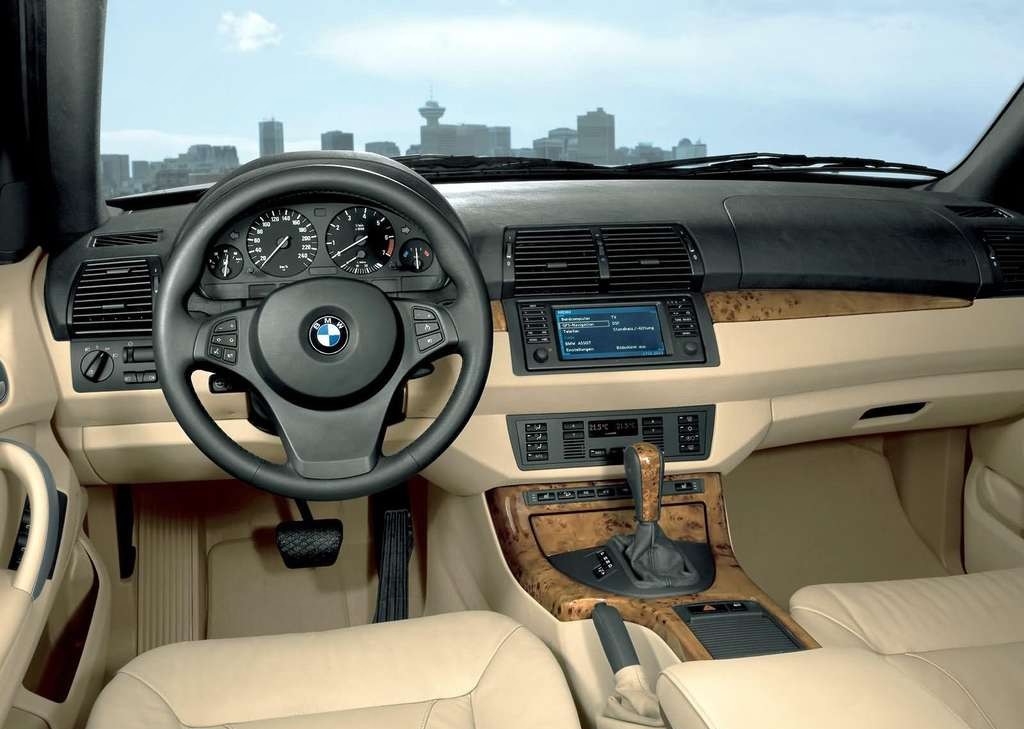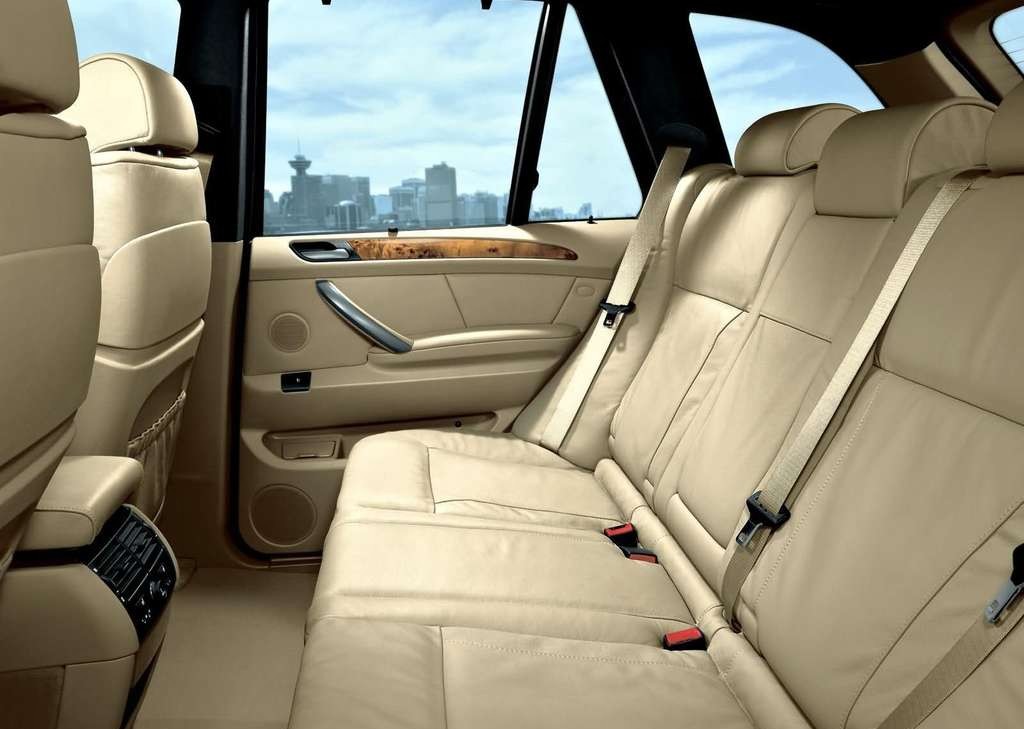
- Refined and reponsive turbo-diesel engines
- Impressive dynamics
- Quiet, well-insulated cabin
- Suspension lacks compliance
- Front seats lack lateral support
- Limited cargo space
- M54 and M62 engines susceptible to VANOS failure
- For M57 diesel engines, screws for butterfly valves could come loose and cause damage
Review: BMW E53.I X5 (2000-03)
Overview
Released in November 2000, the BMW E53 Mk.I (E53.I) X5 was a large, four-wheel drive SUV. Manufactured in South Carolina, USA, the E53.I X5 range initially consisted of the 4.4i variant, with the 3.0i following in March 2001. The range was subsequently expanded with the introduction of the 4.6is (February 2002) and 3.0d (March 2003). The full range is given in the table below.
At the time of its development, BMW owned Land Rover and the X5 shared its Hill Descent and Off Road Engine Management systems with the L322 Range Rover ; the engines and electronic systems were also shared with the E39 5-Series . With its unitary construction, the E53 X5 was 4667 mm long, 1872 mm wide, 1707 mm tall and had a 2820 mm long wheelbase. Furthermore, the E53 X5 had MacPherson strut front suspension and multi-link rear suspension.
| Variant | Engine | Trans. | Years | Peak power | Peak torque |
|---|---|---|---|---|---|
| 3.0i | 3.0-litre petrol I6 (M54 B30) | 5sp man., 5sp auto |
2001-03 | 170 kW at 5900 rpm | 300 Nm at 3500 rpm |
| 3.0d | 3.0-litre turbo-diesel I6 (M57 D30) | 5sp man., 5sp auto |
2003 | 135 kW at 4000 rpm | 390 Nm at 2000-3000 rpm |
| 4.4i | 4.4-litre petrol V8 (M62 TUB44) | 5sp auto | 2000-03 | 210 kW at 5400 rpm | 440 Nm at 3600 rpm |
| 4.6is | 4.6-litre petrol V8 (N62 B48) | 5sp auto | 2002-03 | 255 kW at 5700 rpm | 480 Nm at 3700 rpm |
4WD system
The E53.I X5 had a permanent four-wheel drive system which, in normal conditions, provided a 38:62 front:rear torque split. The E53 X5 did not have a locking centre differential, but relied on an electronic differential lock to detect and brake slipping wheels (‘Automatic Differential Brake’) to transfer torque to the wheels with grip.
Safety equipment
Standard safety equipment included dual front airbags, front and rear side airbags, full-length curtain airbags (i.e. for front and rear occupants), ABS, electronic brake force distribution, brake assist, electronic stability control, cornering brake control, traction control, hill descent control and front seatbelts with pretensioners and load limiters.
Features
Standard features for the 3.0i and 3.0d included 17-inch alloy wheels (with 235/65 tyres), an eight speaker stereo with CD player, climate control air conditioning, leather upholstery, cruise control, front fog lamps, a leather-wrapped multi-function steering wheel, remote central locking, power mirrors and windows, a tilt and reach adjustable steering column, roof rails, a cargo net, two 12 volt power sockets, a trip computer and an immobiliser.
The 4.4i was further equipped with 18-inch alloy wheels, a ten speaker HiFi stereo with 6-disc CD player, power adjustable front seats with driver’s seat memory settings, rear parking sensors, a TV tuner and power adjustable steering column. The 4.4i and 4.6is were also fitted with self-levelling pneumatic rear suspension.
Beyond this, the 4.6is featured 20-inch alloy wheels (with 275/40 front and 315/35 rear tyres and upgraded brakes), a fourteen speaker stereo with digital sound processing, satellite navigation, contoured sports seats with leather/alcantara upholstery, front seat power lumbar adjustment, heated front seats, xenon headlights with washers, rain-sensing wipers, power retracting mirrors, a power sunroof, steering column memory settings and an alarm.
Review: BMW E53.II X5 (2003-06)
Overview
Released in October 2003, the E53 Mk.II (E53.II) X5 introduced a new four-wheel drive system, engines, transmissions and features. The 4.4i featured a new engine with Valvetronic inlet valve control and double variable camshaft timing (VANOS), while the turbo-diesel engine in the 3.0d was more powerful. Furthermore, the 3.0d, 4.4i and 4.8is were fitted with a six-speed ZF automatic transmission.
Visually, the E53.II X5 could be identified by its enhanced bonnet creases, larger grille, new headlights with illuminated rings, new tail lights, revised lower skirts with flared air inlets and new alloy wheel designs.
| Variant | Engine | Trans. | Years | Peak power | Peak torque |
|---|---|---|---|---|---|
| 3.0i | 3.0-litre petrol I6 | 6sp man., 5sp auto |
2003-06 | 170 kW at 5900 rpm | 300 Nm at 3500 rpm |
| 3.0d | 3.0-litre turbo-diesel I6 (M57 TUD30) | 6sp man., 6sp auto |
2003-06 | 150 kW at 4000 rpm | 480 Nm at 2000-2750 rpm |
| 4.4i | 4.4-litre petrol V8 (N62 B44) | 6sp auto | 2003-06 | 235 kW at 6100 rpm | 440 Nm at 3700 rpm |
| 4.8is | 4.8-litre petrol V8 (N62 B48) | 6sp auto | 2004-06 | 265 kW at 6200 rpm | 490 Nm at 3500-3600 rpm |
xDrive
The E53.II X5 introduced BMW’s xDrive four-wheel drive system. In normal driving, the electronically controlled multi-plate clutch could distribute power from an extreme of 100 per cent to the rear wheels (clutch open) through to 50:50 front/rear (clutch closed). If the rear wheels, however, did not have grip, then the stability and traction control systems would direct all torque to the front axle. Under hard acceleration, the clutch would full engage to provide a 50:50 front/rear torque split. The xDrive system was also integrated with the electronic stability and traction control systems to brake individual wheels and transfer torque to the wheels with grip.
Safety equipment
Standard safety equipment for the E53.II X5 was extended to include a trailer stabilisation function within the electronic stability control system and seat belt reminders for the front seats.
Euro NCAP crash testing
In Euro NCAP crash testing , the E53.II X5 received a five star adult occupant protection rating with a score of 32.66 out of 37. In the offset crash test, protection from serious chest and leg injury was marginal for the driver. In the side and pole impact tests, however, the X5 received maximum points.
Features
Standard features were extended to include rain-sensing wipers, automatic headlights and a soft-closing upper tailgate. The 4.4i gained directional bi-xenon headlights, front parking sensors and power retracting mirrors with automatic dipping on reverse; the 4.8is was also equipped with adaptive headlights and Bluetooth connectivity.
Related links
